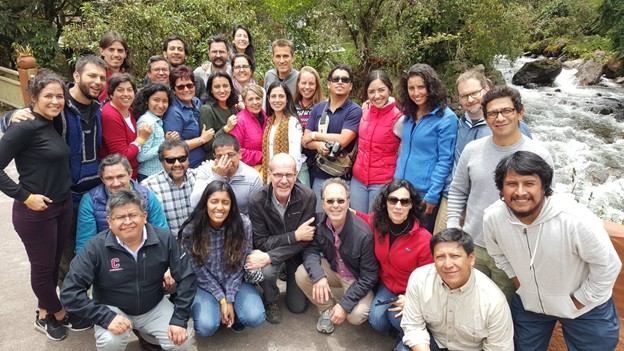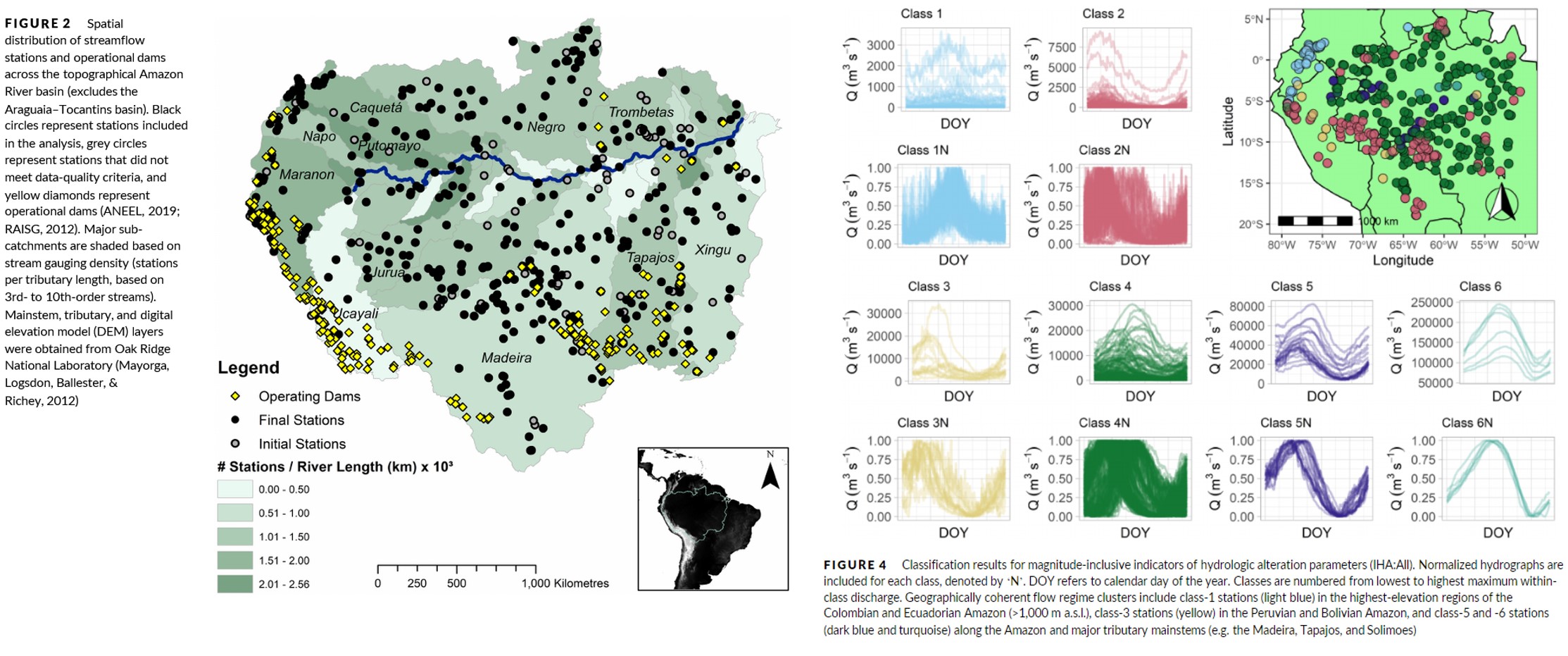by Sharmin F. Siddiqui

In October 2018, scientists and conservationists gathered to examine new frontiers in ecology and conservation along the Amazon Andes river network. The sheer size and complexity of this vast and complex region inspired a pressing question:
This question was further motivated by the role of streamflow as a major driver of aquatic ecology and ecosystem functioning. Understanding the spatial distribution of flow regimes across the Amazon is useful for recognizing ecohydrological processes and informing river management and conservation, especially in areas with limited or inconsistent streamflow monitoring.
This paper compares four inductive approaches for classifying streamflow regimes across the Amazon using streamflow records from Bolivia, Brazil, Colombia, Ecuador, and Peru. The high spatial coverage and availability of long-term streamflow data across the Amazon basin allowed the characterization of baseline flow regimes. Classification was accomplished through hierarchical clustering of flow metrics and daily streamflow data from median annual hydrographs for 400+ stations (representing 7,000+ years of data across all stations) on datasets which included and minimized the influence of streamflow magnitude. For flow magnitude-independent methods, optimal solutions included six or seven primary hydrological classes. Across methods, class membership was strongly associated with the timing, frequency, and rate of change of flow, and spatially coherent clusters were associated with seasonal, elevational, and stream-order gradients. These results provide a framework for studying relationships between hydrological regimes and ecological responses in the context of changing climate, land use, and human-induced hydrological alteration.

Given the rapid pace of human modification in the Amazon Basin, understanding the spatial distribution and predictability of streamflow patterns across basins provides insight into riverine conditions at the ecosystem scale and supports aquatic conservation and efforts to maintain and restore the natural flow regime. This concept may be applied in the development of conservation programs that specifically aim to maintain hydrological diversity. Effective programs would assess potential losses in hydrological function or deviations from the natural flow regime and then guide and promote management decisions that ultimately maintain baseline ecological functioning.
The resulting hydrological classification leverages existing streamflow data to:
- assist in the conservation of natural flow regimes given limited financial and organizational resources,
- further our understanding of research needs in flow–ecology relationships,
- guide the restoration of altered flows to promote the long-term welfare of freshwater ecosystems across the Amazon Basin.
The paper and supporting materials can be found here.